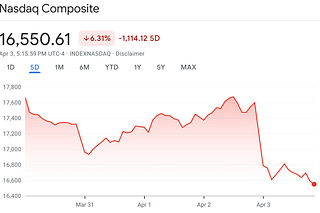
1. Power Laws
I don’t have anything to add on the Georgia races. If you’re looking for some odds, I’d probably rank the probable outcomes this way:
Loeffler and Perdue win—60 percent
Perdue and Warnock win—20 percent
Warnock and Ossoff win—15 percent
Loeffler and Ossoff win—5 percent
The black swan most worth thinking about is this: If Democrats do get one of the seats, what’s to keep Lisa Murkowski from caucusing with them? What’s McConnell going to tell her? Stay with the party and I’ll make sure Trump doesn’t primary you.
Good luck with that.
I want to talk about Cocaine Mitch for a minute because what we’re seeing right now in the Republican party is a conflict between two different types of power: institutional power versus popular power.
Congress has always had these two power dynamics operating in some tension. There are the representatives and senators who are popular vote-getters—they know how to win elections. And there are representatives and senators who know how to manage caucus politics.
You rarely see people who are dominant at both.
For instance: Nancy Pelosi could never get elected in a district that wasn’t at least D+10. That’s not her strength. But she is a master of managing people and wielding institutional power.
Same for McConnell. Do you think he ever could have gotten to the Senate from a state that wasn’t Super Safe Team Red? Nopety nope-nope. But he’s very good at strong-arming individual members of his caucus and using the power that comes from sitting at the head of his institution.
(It’s not an accident that the institutional power players on both sides rarely have to worry about winning elections back home. The last time a House speaker was defeated in a general election was Tom Foley in 1994; for a Senate majority leader it was Tom Daschle in 2004.)
Because of that, you might think that institutional power is more dominant than popular power.
But that’s not really true.
The truth is that only institutional power can accomplish specific policy goals. You can’t get your tax cut passed or your judges confirmed if you don’t have the institutional power.
But what if your goal isn’t a policy to be enacted by the institution? What if it’s more elemental: Like the dominance of the institution?
Well, in that case, popular power—power derived solely from the will of the people—is the only game in town and institutional power is more or less impotent.
And I don’t think Mitch McConnell really understood this when he embarked on his effort to manage, contain, and outlast Donald Trump.
Because when Republican voters don’t really care about policy outcomes anymore, then institutional power has nothing to give them and popular power is everything.
That’s Trump’s real genius. He understood, in the deepest sense, that there was a large bloc of Republican voters who didn’t give a crap about small government or entitlement reform or regulating Big Tech. They just wanted to hurt the people they hated and feel like they were part of something big. Trump rallied them and in the process discovered that this bloc was pretty close to a majority of the party’s base.
It was his eureka moment.
And while the rest of the Republican world began adapting to this new dynamic—either buckling, like Rubio and Cruz, or harnessing the popular power, like Senator Football Coach or MTGQ—Mitch McConnell kept playing the same institutional power games, thinking that he was the one who had the whip hand because eventually Trump would be out of office and so, out of power.
But that’s not the way popular power works. It’s like the sea. It might recede, but it never goes away. And when you have 30 million, 50 million, 75 million people who are with you to the death, then being out of office is less of a problem. Because you can still exert your popular power over the people who are still in office.
On Wednesday, roughly half of all the elected Republicans in the federal government will vote to overthrow America’s democratic system. They will do this in the face of stern warnings from the man who is, ostensibly, the most powerful Republican in the land for the next two years.
This vote will be seen by many as an exercise in futility, but that’s wrong. The vote might be futile in terms of overturning the election result, but it will be extremely effective in terms of cementing the new power structure of the Republican party:
It tells us what the future course of the GOP will be and who has the power.
Mitch McConnell got his judges and lost control of his party because, ironically, it was Donald Trump who was playing the long game.
He understood the true nature of power in ways that squirrelly little Mitch McConnell, with his conference calls and committee assignments and member-to-member bullying couldn’t really conceive.
Mitch McConnell is yesterday’s man. The future has new battles. New challenges. New alliances. And new hopes. Join us at The Bulwark.
2. The China Virus
I have been conspicuously quiet on the question of the origins of SARS-CoV-2 over the last ten months because while I’m happy to accept that this novel coronavirus migrated naturally from animals to humans—and this is the most likely explanation—it does not seem to me a closed case. It does seem possible that the virus escaped from a lab.
Probably like this.
(I’m kidding.)
I suspect that we will eventually know the origin of the virus with greater certainty and that will be good information to have. But if you want the non-conspiracy theory version of how COVID might have jumped from a lab—if that is where it came from—then this New York magazine piece on the lab-leak hypothesis is good reading, because it’s speculative and careful and smart:
A lab accident — a dropped flask, a needle prick, a mouse bite, an illegibly labeled bottle — is apolitical. Proposing that something unfortunate happened during a scientific experiment in Wuhan — where COVID-19 was first diagnosed and where there are three high-security virology labs, one of which held in its freezers the most comprehensive inventory of sampled bat viruses in the world — isn’t a conspiracy theory. It’s just a theory. It merits attention, I believe, alongside other reasoned attempts to explain the source of our current catastrophe. . . .
The new disease, as soon as it appeared, was intercepted — stolen and politicized by people with ulterior motives. The basic and extremely interesting scientific question of what happened was sucked up into an ideological sharknado.
Some Americans boycotted Chinese restaurants; others bullied and harassed Asian Americans. Steve Bannon, broadcasting from his living room, in a YouTube series called War Room, said that the Chinese Communist Party had made a biological weapon and intentionally released it. He called it the “CCP virus.” And his billionaire friend and backer, Miles Guo, a devoted Trump supporter, told a right-wing website that the communists’ goal was to “use the virus to infect selective people in Hong Kong, so that the Chinese Communist Party could use it as an excuse to impose martial law there and ultimately crush the Hong Kong pro-democracy movement. But it backfired terribly.”
In The Lancet, in February, a powerful counterstatement appeared, signed by 27 scientists. “We stand together to strongly condemn conspiracy theories suggesting that COVID-19 does not have a natural origin,” the statement said. “Scientists from multiple countries have published and analyzed genomes of the causative agent, severe acute respiratory syndrome coronavirus 2 (SARS-CoV-2), and they overwhelmingly conclude that this coronavirus originated in wildlife, as have so many other emerging pathogens.” . . .
Everyone took sides; everyone thought of the new disease as one more episode in an ongoing partisan struggle. Think of Mike Pompeo, that landmass of Cold War truculence; think of Donald Trump himself. They stood at their microphones saying, in a winking, I-know-something-you-don’t-know sort of way, that this disease escaped from a Chinese laboratory. Whatever they were saying must be wrong. It became impermissible, almost taboo, to admit that, of course, SARS-2 could have come from a lab accident. “The administration’s claim that the virus spread from a Wuhan lab has made the notion politically toxic, even among scientists who say it could have happened,” wrote science journalist Mara Hvistendahl in the Intercept.
That strikes me as about right: Because know-nothings like Trump insisted that the lab theory must be true in an attempt to alibi themselves, then most of the mainstream reacted by believing that the lab theory must not be correct.
When the best answer is: The most likely explanation is zoonotic transmission, but we don’t know definitively either way.
There is a lesson here about tribalism that’s worth parsing out:
Not everything that bad people say is wrong and not every action that bad people take is bad.
As we dig out from the Trump era, it’s important to actively guard against negative partisanship and to evaluate information and policies independently. It’s not good enough to simply observe what Trump did and then decide to do the opposite.
Example: Overall, the federal government’s response to COVID was disastrous and resulted in scores of thousands of unnecessary deaths.
But not every aspect of the government’s response was ill-advised. Operation Warp Speed succeeded for a number of reasons, including: (a) considering the input of industry stakeholders alongside academic researchers and (b) having the government eat the cost of early production before vaccine technologies were proven.
Negative partisanship is a big part of what got us into this mess. Don’t let it wreck our attempt to rebuild.
3. Oreos
The Pudding has come out with an amazing, choose-your-own-adventure style story. This is the kind of thing the internet was invented for.
What happened is this: The Pudding wanted to do a reported piece on a famous crossword puzzle clue from 2020. (Famous for people who talk about crossword puzzles on the internet. I’d never heard of this before.)
They then decided to do three versions of the story: One super tiny. One normal sized. And one deep-dive.
You, the reader, get to pick which one you want to read.
I went with the double-stuff. Obviously. It contains nuggets such as:
“Oreo” has been the 7th most used four-letter word in puzzles since 1993.
Its first appearance in the NYT crosswords was 1993, even though the cookie was invented in 1912.
“Oreo” has three of the five most-used letters in crosswords.
Just go and read the whole thing. It’s amazing.














